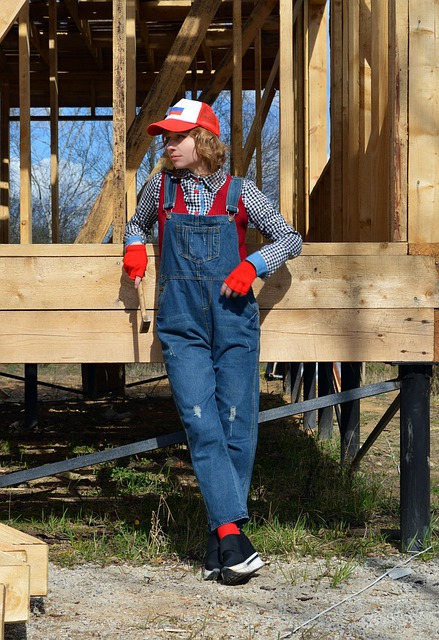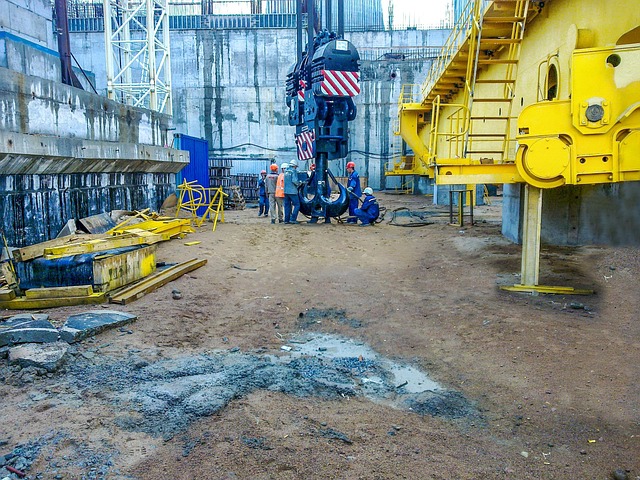Residential foundation repair is crucial for homeowners to maintain their home's structural integrity. Regular inspections are key to identifying issues like wall cracks, uneven floors, and water intrusion early on. Common repair solutions range from minor crack fixes to extensive underpinning or replacing foundation walls. Stem wall inspection is critical as these walls support the entire foundation. Common stem wall issues include cracks from settlement, water shifts, and structural uneven settling. Professionals use tools like moisture meters and GPR for accurate assessment. Homeowners should analyze inspection reports and prioritize repairs based on severity. Timely action prevents costly repairs and ensures home stability. Proper drainage through gutter inspections is vital to protect the foundation from soil saturation and erosion.
A strong foundation is the backbone of any home, and ensuring its integrity is crucial. This comprehensive guide delves into the essential aspect of Residential Foundation Repair, specifically focusing on Foundation Stem Wall Inspection. Understanding the importance of these inspections, their role in identifying common issues, and the latest tools and techniques employed makes homeowners empowered.
From interpreting inspection results to knowing when professional help is needed, this article provides a detailed roadmap for navigating the complexities of Residential Foundation Repair.
Understanding Residential Foundation Repair: The Basics

Residential foundation repair is a critical aspect of maintaining a safe and stable home. The foundation, often considered the backbone of a structure, supports the entire weight of the building. Over time, various factors like soil settlement, water damage, or structural issues can compromise its integrity. Identifying these problems early through regular inspections is key to preventing more severe and costly damages.
When it comes to residential foundation repair, understanding the basics is essential. This includes recognizing common signs of trouble like cracks in walls, uneven floors, or doors that stick. Addressing these issues promptly can range from non-structural solutions like carbon fiber wraps or epoxy injections for minor cracks to more extensive work such as underpinning or replacing damaged sections of the foundation wall. The goal is always to stabilize the structure and ensure its longevity.
Importance of Stem Wall Inspection in Foundation Repair

Stem wall inspection is a critical step in the process of residential foundation repair. These walls, often built with concrete or brick, serve as the load-bearing structure for the entire foundation. Over time, various factors like shifting soil, extreme weather conditions, and structural issues can compromise their integrity. A thorough inspection allows professionals to identify any cracks, bulges, or signs of instability in the stem walls. Early detection is key; addressing problems at this stage can prevent more extensive and costly repairs down the line.
In residential foundation repair, understanding the condition of stem walls is essential for developing effective solutions. By assessing their structural soundness, specialists can determine the best course of action—whether it’s simply reinforcing existing walls or replacing them entirely. Regular inspections are a proactive measure, ensuring homes remain stable and secure, which is paramount for any homeowner seeking reliable residential foundation repair services.
Identifying Common Issues in Stem Walls

Identifying common issues in stem walls is a crucial step in ensuring effective residential foundation repair. One of the most frequent problems is cracks, which can appear due to soil settlement, shifts in ground water levels, or uneven settling of the structure. These cracks may be hairline or more significant, and they can signal underlying structural damage that requires prompt attention. Another common issue is unevenness, where parts of the stem wall may lean or tilt, indicating instability in the foundation. This can be caused by poor initial construction, settlement issues, or even tree roots exerting pressure on the walls.
Proper inspection also uncovers issues related to moisture intrusion, such as water stains, peeling paint, or mold growth. These problems not only compromise the structural integrity of the stem wall but also pose health risks and can lead to further damage if left unaddressed. Additionally, inadequate drainage around the foundation, which is a key factor in preventing water-related issues, should be evaluated during the inspection process. Identifying these common issues allows for targeted residential foundation repair solutions, ensuring the longevity and stability of the structure.
Tools and Techniques for Stem Wall Inspection

When conducting a foundation stem wall inspection, professionals rely on a combination of specialized tools and techniques to accurately assess structural integrity. For residential foundation repair, visual inspections are often the first step. This involves meticulously examining the exterior and interior walls for any signs of cracks, unevenness, or misalignments. Measuring tools like tape measures and laser levels help in quantifying these issues, providing critical data for initial diagnoses.
Advanced techniques include moisture meters to detect water intrusion, which can indicate potential structural damage, and ground-penetrating radar (GPR) to penetrate the soil and locate buried walls or defects beneath the surface. These tools are essential for identifying issues that might be obscured from visual inspection alone, ensuring comprehensive assessments for effective residential foundation repair strategies.
Process of Conducting a Comprehensive Inspection

When conducting a comprehensive inspection for residential foundation repair, professionals start by visually examining the exterior and interior of the structure. This includes checking for any cracks, bulges, or misalignments in the walls and floors, which could indicate potential problems with the stem wall. During this initial assessment, experts also consider factors like settlement patterns, water damage, and previous repairs to gain a holistic understanding of the foundation’s health.
The next step involves a detailed analysis of the stem wall itself. This includes probing for stability by measuring the wall’s integrity, assessing the quality of materials used during construction, and verifying proper drainage around the foundation. By combining visual inspections with non-invasive tools like moisture meters and ground-penetrating radar, professionals can identify hidden issues that may require attention to prevent further residential foundation repair needs down the line.
Interpreting Inspection Findings and Recommendations

When interpreting the outcomes of a foundation stem wall inspection, homeowners should pay close attention to any signs of structural damage or potential issues. These findings offer valuable insights into the current state of their property and guide the next steps in residential foundation repair. Common recommendations include addressing cracks, uneven walls, or signs of water intrusion, which are all indicators of potential foundation instability.
Understanding the inspection report allows homeowners to make informed decisions about repairs. Prioritizing issues based on severity is key; some problems may require immediate attention to prevent further deterioration, while others can be addressed during routine maintenance. Regular monitoring and timely action ensure that any residential foundation repair needs are met effectively, preserving the structural integrity of the home for years to come.
When to Consider Professional Help for Foundation Repair

If you’re noticing signs of potential foundation issues in your home, such as cracks in walls or floors, uneven doors or windows, or noticeable slant in your ceiling, it’s crucial to address the problem promptly. While some minor settlement cracks might be normal for older homes, significant or expanding cracks could indicate more serious structural damage that requires professional attention.
When dealing with foundation problems, especially in residential properties, it’s recommended to consult a specialist in residential foundation repair. They have the expertise and tools to accurately diagnose the issue, whether it’s due to poor initial construction, soil conditions, or other factors. Timely intervention by professionals can prevent further damage, costly repairs down the line, and ensure the safety and stability of your home.
Maintaining Your Home's Foundation: Long-term Strategies

Maintaining your home’s foundation is a crucial investment in its long-term stability and value. A solid foundation acts as the bedrock for your entire structure, so regular inspection and upkeep are essential to prevent costly residential foundation repair down the line. One effective strategy involves monitoring any signs of moisture intrusion or cracks in the foundation walls, addressing them promptly to avoid further damage.
Additionally, ensuring proper drainage around your home is vital. Redirecting rainwater away from the foundation can prevent erosion and keep the soil around your house from becoming overly saturated. Regularly inspecting and cleaning out gutters, as well as installing a suitable drainage system, are simple yet effective measures that contribute significantly to your home’s foundational health.
